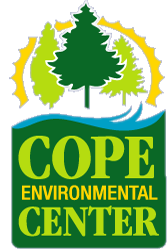TRANSPOSONS IN MAIZE PDF FILE >> READ ONLINE
Applications The first transposon was discovered in the plant maize (Zea mays, corn species), and is named dissociator (Ds). Likewise, the first transposon to be molecularly isolated was from a plant (Snapdragon). Transposons have been an especially useful tool in plant molecular biology. Researchers use transposons as a means of mutagenesis. Transposons ppt 1. Transposons (Transposable Elements) A transposable element (TE) is a DNA sequence that can change its relative position (self- transpose) within the genome of a single cell. Recombination allows the movement of transposable elements, or Transposons. Ross-Ibarra said that now that the maize genome is fully sequenced and transposon locations have been determined, a new realm of research is opening beyond the role of individual genes in maize Though the controlling elements in maize have been studied in great detail by genetic methods, no biochemical characterization has been possible yet. The genetic studies have revealed, however, great similarities among controlling elements in maize and IS elements and transposons in bacteria. They were first discovered by Barbara McClintock in 1950 in maize. Transposons are mobile and can move almost to any place in the target chromosome. TYPES OF TRANSPOSONS There are two modes of Transposition: One that involves an RNA intermediate The other which does not involve RNA intermediate. Transposons are segments of DNA that can move around to different positions in the genome of a single cell. In the process, they may cause mutations; increase (or decrease) the amount of DNA in the genome of the cell, and if the cell is the precursor of a gamete, in the genomes of any descendants. bility for transposons to jump from chromosomal DNA to plasmid DNA and . vice versa, producing antibiotic or in many instances multi drug resistance genes belonging to the Tn family in bacteria [9]. In case the transposable elements do not have the additional genes, they are known as insertion sequences. Some of the common in- We also downloaded an updated version of the maize TE database (Baucom et al. 2009; Schnable et al. 2009) in August 2010. This database consisted of 1,526 elements which are primarily full-sequence, curated elements belonging to both Class 1 (retrotransposons) and Class 2 (DNA transposons), classified according to Wicker et al. (2007). Transposon tagging in plants. By molecular separation of transposons, from a cell nucleus, the cloning is enabled for genes which contain the transposons. By using transposon tagging, researchers have been able to add genetic elements from maize (corn) and Antirrhinum into some other species (such as tobacco, aspen and others). Transposons may also be useful in genetic engineering with eukaryotic cells, by splicing in transposons to activate certain genes. The implications from Barbara McClintock's discovery of transposons may be far-reaching and as significant as Watson and Crick's discovery of the structure of DNA. Mobile genetic elements represent a high proportion of the Eukaryote genomes. In maize, 85% of genome is composed by transposable elements of several families. First step in transposable element life cycle is the synthesis of an RNA, but few is known about the regulation of transcription for most of Working with Molecular Genetics Chapter 9. Transposition CHAPTER 9 TRANSPOSITION OF DNA The final method of changing the DNA in a genome that we will consider is transposition, which is
Comment
© 2024 Created by G1013.
Powered by
![]()


You need to be a member of generation g to add comments!
Join generation g